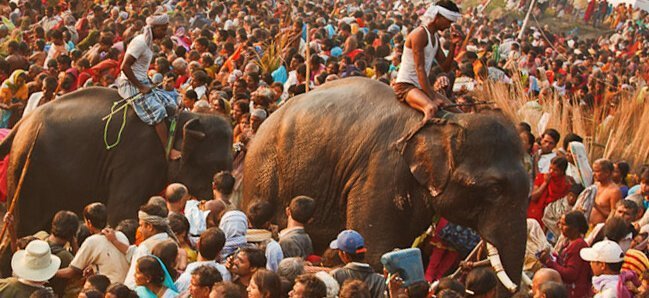History Of Sonepur Cattle fair
The Sonepur Fair’s root can be gone back to the fourth century BC when Chandragupta Maurya, an Indian lord, used to lead the territory. At first, Hajipur used to be Sonepur Mela’s site when just puja was performed at the renowned Harihar Nath Temple. It is accepted that Lord Rama worked this sanctuary while he was going to King Janak’s court for the engagement proposition with Sita. From that point forward, this sanctuary is of extraordinary significance, particularly among local people.
The fair is additionally coordinated in recognition of Lord Vishnu’s intercession in the midst of the longstanding battle between a crocodile (grah) and an elephant (gaj) in Hindu folklore. The fight was an image of water battling with woods. While the elephant was washing in the River Gandak, a crocodile assaulted it. To determine the issue, Lord Vishnu needed to intercede and save the elephant.
During the rule of Aurangzeb, the Mughal head, the genuine fair began in Sonepur with a few exhibitions, slows down, and so on The principle focal point of the fair used to be the exchanging of creatures like elephants and fowls. Yet, with the severe authorization of the Wildlife Protection Act in 1972, elephants’ exchanging was prohibited. Presently, they are arranged in the fair as a fascination and are not available to be purchased.
Importance of Sone
Otherwise called Hariharnath Kshetra Sonepur Mela, this fair was begun to venerate the Lord Hariharnath (Shiva and Vishnu). As it pulls in a few people from everywhere in Asia, it is the biggest cattle fair to be facilitated in Asia. The fair is facilitated for 15 days and carries on for a month. This fair’s principal reason is the exchanging of creatures, which held an extraordinary significance in the antiquated period. The fair is commended on the banks of Gandak River in Bihar, and it is held in the long stretch of November or December of consistently.
Interesting Facts about Sonepur Cattle fair
A visit to Sonepur Mela stays deficient if you don’t enjoy these encounters or visit the fair’s principle attractions. Along these lines, investigate the rundown and make a point not to pass them up this year.
Hariharnath Temple
This is a similar sanctuary where the starting point of this fair can be followed back to. Committed to Lord Hariharnath, it is accepted that this is a similar site where the ruler settled the fight between an elephant and a crocodile. The sanctuary construction has decayed throughout the long term, and the current design that we witness was implicit the Mughal period by Raja Ram Narain. Upon the arrival of Kartik Poornima, fans from a few spots show up here to offer their petitions to Lord Hariharnath and take a dunk in the blessed conversion of River Gandak and Ganga.
Sonepur Cattle fair
How could a visit to this fair be finished without seeing the cattle fair, the primary explanation for the Sonepur Mela? Regardless of whether you don’t wish to exchange creatures, you can see the observer how elephants are adorned for the fair. Other than them, you will likewise see types of ponies, jackasses, canines, hares, wild oxen, goats, camel, and horses. Poultry and flying creatures are additionally ready to move at this fair. As a wide exhibit of creatures is exchanged here, it has pulled in and still allures global guests from Japan, Kazakhstan, France, Austria, Switzerland, Portugal, and the US.
Time to Celebrate Sonepur Cattle fair
The Hindu Calendar picks the dates for Sonepur Mela. In this way, the mela begins in the Kartik month on the full moon day, called Kartik Poornima. As a rule, it falls in one or the other November or December as per the Gregorian Calendar. Sonepur Mela 2020 is from twentieth November to fifth December.
